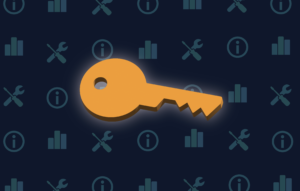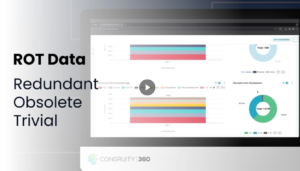Jason Elliott
Technical Writer
Jason has five years of experience as a technical writer. Jason has coordinated with cross-functioning teams to adapt complex information to tasks, references, and other contextual aid.
Data security has become more important than ever in 2022. Due to the increase in data breaches over the years, data security for sensitive information has become a more prevalent issue for both regulatory requirements, such as GDPR, and customer trust, who will essentially avoid doing business with companies they don’t trust with their personal data. Confidential information for organizations is also commonly stored as data, which in turn requires effective data security to protect both trade secrets and the bottom line.
This blogpost provides a high-level overview of data security, the top data security challenges of 2022, and their typical solutions.
What is Data Security?
As the term implies, data security is the practice of protecting sensitive and confidential data from unauthorized access, loss, and corruption. Three principles set the baseline for effective data security:
- Confidentiality – preventing unauthorized access with data tools such as access control, encryption, and authentication.
- Integrity – protecting data from data erasure or modification out of compliance, with data tools such as digital signatures, data discovery, and classification.
- Availability – ensuring the data infrastructure works properly to provide data services whenever needed, such as identity servers, databases, and cloud services.
These principles are a broad guide for solving the following data security challenges prevalent in 2022.
Top 2022 Challenges (and How to Solve Them)
Remote Work
The COVID-19 pandemic prompted a big push from the workforce for the option to work remotely. This accelerated an existing trend towards remote work, which was already favored for the cost savings in commuting to and maintaining a large office space. But the means to access work remotely requires an infrastructure that authenticates staff, maintains their digital workspace, and shields that access from malicious intent.
A “zero trust” model for remote work access goes a long way in implementing data protection for remote workers. When any entity on the network is not trusted by default and requires continuous verification for access, that approach plugs many security holes upfront that helps limit an attacker’s access to data through a remote work access point. Unusual access to data can also be more easily flagged with this approach.
Staffing Shortages
A cybersecurity team to assess risk, detect threats, and respond to attacks are often understaffed for the task. This oversight can leave organizations less prepared to fully implement their data security measures, especially in response to a data breach.
Recruiting and maintaining cybersecurity talent should be a priority to avoid this issue. Experience in cloud service management will be a plus, and on-prem service management experience will also be helpful for legacy data maintenance and hybrid cloud migration strategies.
Ransomware
Ransomware has become one of the most common types of malware attacks that targets organizations big and small. When a malicious file is opened, the ransomware encrypts the data and spreads this encryption wherever it can reach on a network to render said data inaccessible. The ransomware posts a demand for money, often in cryptocurrency, in exchange for the decryption key.
Aside from implementing data security best practices to prevent a ransomware attack, organizations must be prepared if such an attack succeeds. A data backup and restoration strategy can help mitigate the impact of data loss, while knowing the proper contacts, especially in your cybersecurity team and in law enforcement, can keep recovery efforts on-track.
Multi-Factor Authentication
Due to the many ways an attacker can compromise a simple password authentication, whether through weak and common passwords or through social engineering, multi-factor authentication (MFA) has become a preferred standard for protecting user access. However, it is also hampered by a low adoption rate due to its perceived inconvenience. MFA relies on two or more of the following, as defined by the NIST:
- Something the user knows, such as a password, pass phrase, or PIN
- Something the user has, such as a physical token or a phone-based authenticator
- Something the user is, based on biometric data such as a fingerprint or a retinal scan
It is now becoming possible to set up MFA without the use of a password by using passwordless authentication methods. Because passwords can still be a weak point for data security even with multi-factor authentication enabled, organizations should investigate passwordless authentication as a potential means to enhance both their data security and their user experience. In the meanwhile, multi-factor authentication should still be adopted by an organization to enhance data security. Hardware-based authentication such as a token would be more secure than a personal device such as a phone, but an organization may opt for the latter to improve their adoption rate.
Security Awareness
One of the ongoing struggles of maintaining data security at an organization is ensuring that employees are aware of and apply best practices. Security awareness, if not naught or successfully retained, can be a critical factor in a security breach when an employee’s security awareness is a major line of defense.
Security awareness might be covered by an annual compliance review to ensure that employees are aware of best practices, but strong security awareness programs also empower employees to identify risks in data security and teach this ability in an engaging and comprehensive way. Accomplishing this requires analyzing where the organization currently stands on security awareness and identifying what it specifically needs to improve its security awareness. Major resources such as those provided by the non-profit National Cybersecurity Alliance can be an important first step in establishing strong security awareness training.
Document Retention Policies
Whether for legal compliance or for proper maintenance of important and sensitive data, organizations need a document retention policy as part of their data security. Document retention policies establish how an organization handles physical and digital records for their entire lifecycle. Such a policy not only helps stay compliant with applicable laws, but also helps to cut costs by separating the essential data to retain from the aged, stale, or redundant data that can be disposed or deleted.
Implementing a document retention policy for an organization requires conducting a data audit to assess what is possessed, mapping workflows to organize current and future data, and assigning classifications to take appropriate actions. It is ideal to automate this process as well to reduce the costs of effective and compliant document retention.
Supply Chain
Data security has become an increasingly important factor in the maintenance and upkeep of a supply chain. The optimization of a supply chain depends more on sensitive data processed and maintained in digital platforms. Such tools depend highly on not just accurate data, but secured data as well, to help prevent a security breach that disrupts supply chain operations at a significant cost.
To improve the quality and security of supply chain data, organizations should extend their security awareness training and document retention policies to account for supply chain data as well. A third-party audit can also help an organization assess the state of their supply chain data to identify potential issues.
Get Ahead of Your Data Security
Classify360 helps you get ahead of your data security. With the means to organize, classify, and act on your unstructured data on either a manual or automated basis securely from the cloud, Classify360 empowers your organization to take significant steps in reaching its data security goals.









